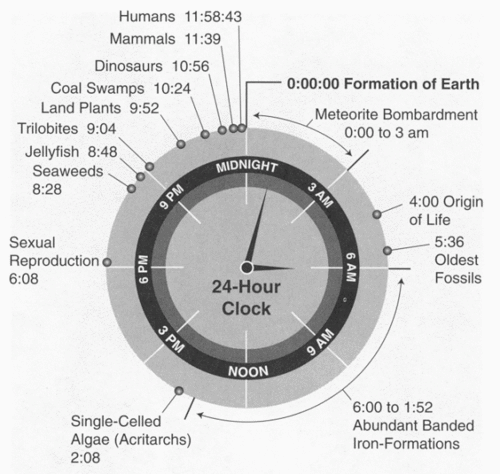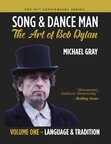Michael Gray's Blog, page 14
May 18, 2013
MAP NO. 15: MY UPCOMING UK GIGS, JUNE & NOVEMBER
View Upcoming 2013 Gigs by Michael Gray, Europe in a larger map
Published on May 18, 2013 08:45
TEXT AND DRUGS AND ROCK'N'ROLL?
I don't have a copy of this, and don't know the author, but it sounds interesting - and has a title that gets itself noticed:
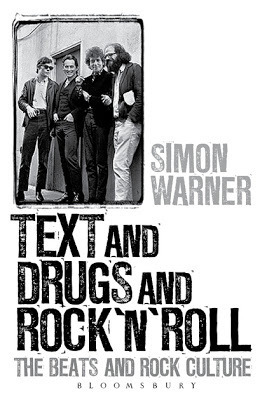
This is the publisher's blurb, not mine:
Text and Drugs and Rock'n'Roll explores the interaction between two of the most powerful socio-cultural movements in the post-war years - the literary forces of the Beat Generation and the musical energies of rock and its attendant culture.
Simon Warner examines the interweaving strands, seeded by the poet/novelists Jack Kerouac, Allen Ginsberg, William Burroughs and others in the 1940s and 1950s, and cultivated by most of the major rock figures who emerged after 1960 - Bob Dylan, the Beatles, Bowie, the Clash and Kurt Cobain, to name just a few.
This fascinating cultural history delves into a wide range of issues: Was rock culture the natural heir to the activities of the Beats? Were the hippies the Beats of the 1960s? What attitude did the Beat writers have towards musical forms and particularly rock music? How did literary works shape the consciousness of leading rock music-makers and their followers? Why did Beat literature retain its cultural potency with later rock musicians who rejected hippie values? How did rock musicians use the material of Beat literature in their own work? How did Beat figures become embroiled in the process of rock creativity?
These questions are addressed through a number of approaches - the influence of drugs, the relevance of politics, the effect of religious and spiritual pursuits, the rise of the counter-culture, the issue of sub-cultures and their construction, and so on. The result is a highly readable history of the innumerable links between two of the most revolutionary artistic movements of the last 60 years.

This is the publisher's blurb, not mine:
Text and Drugs and Rock'n'Roll explores the interaction between two of the most powerful socio-cultural movements in the post-war years - the literary forces of the Beat Generation and the musical energies of rock and its attendant culture.
Simon Warner examines the interweaving strands, seeded by the poet/novelists Jack Kerouac, Allen Ginsberg, William Burroughs and others in the 1940s and 1950s, and cultivated by most of the major rock figures who emerged after 1960 - Bob Dylan, the Beatles, Bowie, the Clash and Kurt Cobain, to name just a few.
This fascinating cultural history delves into a wide range of issues: Was rock culture the natural heir to the activities of the Beats? Were the hippies the Beats of the 1960s? What attitude did the Beat writers have towards musical forms and particularly rock music? How did literary works shape the consciousness of leading rock music-makers and their followers? Why did Beat literature retain its cultural potency with later rock musicians who rejected hippie values? How did rock musicians use the material of Beat literature in their own work? How did Beat figures become embroiled in the process of rock creativity?
These questions are addressed through a number of approaches - the influence of drugs, the relevance of politics, the effect of religious and spiritual pursuits, the rise of the counter-culture, the issue of sub-cultures and their construction, and so on. The result is a highly readable history of the innumerable links between two of the most revolutionary artistic movements of the last 60 years.
Published on May 18, 2013 07:35
May 6, 2013
SARAH BEATTIE: COME ON IN MY KITCHEN
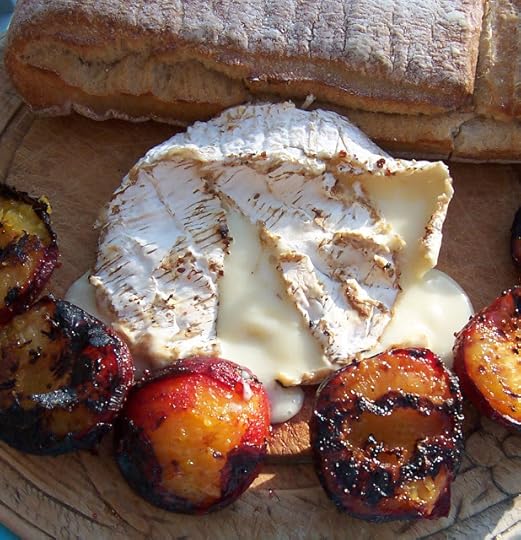 photograph © Sarah Beattie, 2012
photograph © Sarah Beattie, 2012Let me declare an interest. Sarah Beattie is my wife. That said, let me also declare that she deserves far wider recognition as an innovative, pioneering cook. So I'm happy to report that we learnt last week that she's been shortlisted for the Guild of Food Writers' annual Cookery Journalist of the Year Award. There are only three people on that shortlist: Diana Henry (Telegraph), Yotam Ottolenghi... and Sarah.
It's a big deal. These awards have been going since 1996, they're the UK's most important food awards, and the shortlists have always comprised the big names: people with TV series, best-selling books and/or columns in mega magazines or the national broadsheets. So it's quite something that Sarah's work has put her in amongst them.
Something else marks her out as the underdog: her food is entirely vegetarian. She's earned her shortlisting for the large monthy feature she contributes to Vegetarian Living magazine - for each of which she devises a set of recipes, cooks them all into existence in our kitchen and then photographs them for publication. No assistant, no sponsor, no production company, no expense account, no food stylist, no studio. She does it all. The result is a celebration of seasonal eating pleasure, time after time.
Eating pleasure. That's the crucial thing. Hers is not the kind of approach that gives vegetarian food a bad name. Sarah is a veggie not to be Worthy or Moralising but through a personal disinclination for the killing of animals. She doesn't preach about it, or try to convert other people. Not even me. It's her own committed position, but what makes her food so good is a sheer pleasure in food, in its tastes and textures, in the bounty of its vast variety. So she can call on her wide, deep knowledge of how food works, from micro-biology to world-wide cuisines, to create rich and beautiful food that anyone can love. Indeed meat-eaters often don't notice that the meal of hers they just ate, including a second helping, contained no meat at all.
The clue is in the title of her first published book: Neither Fish Nor Fowl: Meat-Free Eating For Pleasure.
Here are just a couple more samples of her work. The food I'm lucky enough to eat at home:
 Borscht-poached ravioli; photograph © Sarah Beattie 2013
Borscht-poached ravioli; photograph © Sarah Beattie 2013Sarah has created as many dishes as Bob Dylan has created songs. A special favourite of mine is the savoury Croquembouche shown on the front cover of Neither Fish Nor Fowl : choux pastry balls filled with Brie and cranberry, stacked in a pyramid and covered with caramelised onions. And then there's her pear, blue cheese & walnut pizza:
 photograph © Sarah Beattie 2013
photograph © Sarah Beattie 2013And that's not to mention the clear celeriac soup; the summer salad of watermelon, Feta, onion & mint; a brilliant yellow Goan curry; the tomato, Stilton & vodka ice-cream...
She has a big new book, text and photographs, ready for a publisher to take on. It's to be titled Meat-Free Any Day.
The Cookery Journalist of the Year award winner will be announced at the Guild of Food Writers' event at the RIBA building in London on May 29. Sarah will be there, and pleased to be there whether she wins or not. And I'll be right there with her. Still declaring an interest.
Published on May 06, 2013 06:13
May 2, 2013
THIRSTY BOOTS
Here's its composer, Eric Andersen, performing ‘Thirsty Boots', assisted by Roger McGuinn:
Eric's harmonica playing here makes his version sound more of a Bob song than Dylan's own (albeit charming) version. And a note to Bob Dylan's record company: it's Andersen, not Anderson.
Eric's harmonica playing here makes his version sound more of a Bob song than Dylan's own (albeit charming) version. And a note to Bob Dylan's record company: it's Andersen, not Anderson.
Published on May 02, 2013 03:24
April 30, 2013
QUAINTNESS OF THE RECENT PAST NO. 31: CAKE
'You Can Have Him' by Cake, 1967; thanks to @JacksonWylde guesting on Neglected Nuggets (@TheLostRecord ) on April 30, 2013; there are many other versions of this strong song - I was first struck by it in my youth when I heard Roy Hamilton's version , a single from 1961 that sounded quite soulful and mysterious at the time. I can still hear that quality in his vocal. It's broodingly dark when it's in low register, and when he goes higher, he sounds very like Jackie Wilson.
Published on April 30, 2013 13:27
April 19, 2013
TWO FINE SAX PLAYERS DIED 20 YEARS AGO TODAY
By coincidence, two sax players who defined the rock'n'roll sax sound between them, died on April 19, 1993: Clifford Scott and the more famous Steve Douglas. They were 64 and 54 years old respectively.
Clifford Scott played with Jay McShann, Amos Milburn, and Lionel Hampton before joining Bill Doggett's memorable group and co-writing & recording, most famously, their 1956 hit ‘Honky Tonk'. He is the prominent star of the B-side, ‘Honky Tonk Part 2':
There's an interesting piece, taken from John Broven, about how ‘Honky Tonk' came about, and more about Scott Clifford here .
In The Bob Dylan Encyclopedia I did Clifford Scott a disservice in giving all the credit for shaping how rock saxophone sounded to that other great player, Steve Douglas, who was blaring and honking away so splendidly for Duane Eddy while Scott was doing the same for Bill Doggett. Mea culpa.
Of course I knew more about Steve Douglas because two decades later he was playing with Bob Dylan. Here's the entry on him in my book:
Douglas, Steve [1938 - 1993]
Steven Douglas Kreisman was born in Hollywood on September 24, 1938, served in the US Navy Drum and Bugle Corps after leaving school and became one of rock’n’roll’s greatest sax players. He came to prominence playing on Duane Eddy’s instrumental records of the late 1950s. Eddy used three other tenor sax players in this period (JIM HORN, Gil Bernal and Plas Johnson) but on many of them, Eddy’s ‘million dollar twang’ guitar sound, shudderingly reverberative and deep, would concede half a verse or so to Douglas’ gorgeously beefy, crucially unjazzlike solos - and between the two of them, on ‘Cannonball’ (1958), ‘Yep!’ and ‘Forty Miles Of Bad Road’ (1959), ‘Peter Gunn’ (1960) and others, they created one of the defining sounds of 1950s teenage rebellion, epitomes of the strutting toughness of teddy boys and rock’n’roll. And it has to be said that now, hearing these old records anew, it is Duane who sounds overly simple and seemly, mild and polite to a fault; the sax holds up far better.
Douglas, pianist Larry Knetchel and Al Casey went out on the road as the Rebels on Dick Clark Bandstand package shows but Douglas also kept up session playing, and in this capacity worked on lots of PHIL SPECTOR wall-of-sound hit singles (those ‘little symphonies for the kids’, as Spector called them); his is growling baritone blasting into the middle of the Crystals’ ‘Da Doo Ron Ron’. He made a solo album, Twist, in 1962 (of course it was in 1962) but also augmented a whole slew of the surf records of the early 1960s, among them hits by Jan & Dean and the Beach Boys, including 1965’s masterwork Pet Sounds, as well as recording with everyone from the Lettermen to Lesley Gore.
In the 1970s Steve Douglas played with Mink DeVille, Ry Cooder, Mickey Hart and the Ramones, among others, and in 1978 he joined Bob Dylan’s uniquely large line-up for the 1978 World Tour. Dylan made a point of stressing Douglas’ rock’n’roll credentials, and used him not only for the 114 concerts that of that year, in Japan, Australia, Europe and the US, but also on the 1978 album Street Legal. He came back three years later for the Shot Of Love sessions in late April and early May 1981. On the released album he plays the alto sax on ‘Dead Man, Dead Man’ and ‘Every Grain of Sand’.
In the early 1980s Douglas also played with Duane Eddy again, along with the great Hal Blaine on drums and, at one point in 1983, Ry Cooder on second guitar. He reappeared in Dylan’s professional life on some Knocked Out Loaded sessions exactly five years after his Shot of Love contributions, playing on the overdubs of April 28-29, 1986 onto the original recording of ‘Driftin’ Too Far From Shore’ made on July 26, 1984, and on attempts at ‘You’ll Never Walk Alone’, ‘Unchain My Heart’ and ‘Without Love’ made between April 29 and May 5 1986, all in Topanga Park, California. More significantly, at the same sessions he plays on the Knocked Out Loaded tracks ‘They Killed Him’, ‘You Wanna Ramble’, ‘Precious Memories’, ‘Maybe Someday’ and ‘Brownsville Girl’. Their association fizzled out in an unused session in Hollywood some time in April 1987, at which Douglas played on still-uncirculated versions of ‘Look On Yonder Walls’, ‘Rollin’ and Tumblin’, ‘Red Cadillac and a Black Mustache’ and two takes of BILLY LEE RILEY’s song ‘Rock With Me Baby’.
Steve Douglas died of heart failure (or possibly boredom) at the beginning of a session for Ry Cooder in LA on April 19, 1993.
Clifford Scott played with Jay McShann, Amos Milburn, and Lionel Hampton before joining Bill Doggett's memorable group and co-writing & recording, most famously, their 1956 hit ‘Honky Tonk'. He is the prominent star of the B-side, ‘Honky Tonk Part 2':
There's an interesting piece, taken from John Broven, about how ‘Honky Tonk' came about, and more about Scott Clifford here .
In The Bob Dylan Encyclopedia I did Clifford Scott a disservice in giving all the credit for shaping how rock saxophone sounded to that other great player, Steve Douglas, who was blaring and honking away so splendidly for Duane Eddy while Scott was doing the same for Bill Doggett. Mea culpa.
Of course I knew more about Steve Douglas because two decades later he was playing with Bob Dylan. Here's the entry on him in my book:
Douglas, Steve [1938 - 1993]
Steven Douglas Kreisman was born in Hollywood on September 24, 1938, served in the US Navy Drum and Bugle Corps after leaving school and became one of rock’n’roll’s greatest sax players. He came to prominence playing on Duane Eddy’s instrumental records of the late 1950s. Eddy used three other tenor sax players in this period (JIM HORN, Gil Bernal and Plas Johnson) but on many of them, Eddy’s ‘million dollar twang’ guitar sound, shudderingly reverberative and deep, would concede half a verse or so to Douglas’ gorgeously beefy, crucially unjazzlike solos - and between the two of them, on ‘Cannonball’ (1958), ‘Yep!’ and ‘Forty Miles Of Bad Road’ (1959), ‘Peter Gunn’ (1960) and others, they created one of the defining sounds of 1950s teenage rebellion, epitomes of the strutting toughness of teddy boys and rock’n’roll. And it has to be said that now, hearing these old records anew, it is Duane who sounds overly simple and seemly, mild and polite to a fault; the sax holds up far better.
Douglas, pianist Larry Knetchel and Al Casey went out on the road as the Rebels on Dick Clark Bandstand package shows but Douglas also kept up session playing, and in this capacity worked on lots of PHIL SPECTOR wall-of-sound hit singles (those ‘little symphonies for the kids’, as Spector called them); his is growling baritone blasting into the middle of the Crystals’ ‘Da Doo Ron Ron’. He made a solo album, Twist, in 1962 (of course it was in 1962) but also augmented a whole slew of the surf records of the early 1960s, among them hits by Jan & Dean and the Beach Boys, including 1965’s masterwork Pet Sounds, as well as recording with everyone from the Lettermen to Lesley Gore.
In the 1970s Steve Douglas played with Mink DeVille, Ry Cooder, Mickey Hart and the Ramones, among others, and in 1978 he joined Bob Dylan’s uniquely large line-up for the 1978 World Tour. Dylan made a point of stressing Douglas’ rock’n’roll credentials, and used him not only for the 114 concerts that of that year, in Japan, Australia, Europe and the US, but also on the 1978 album Street Legal. He came back three years later for the Shot Of Love sessions in late April and early May 1981. On the released album he plays the alto sax on ‘Dead Man, Dead Man’ and ‘Every Grain of Sand’.
In the early 1980s Douglas also played with Duane Eddy again, along with the great Hal Blaine on drums and, at one point in 1983, Ry Cooder on second guitar. He reappeared in Dylan’s professional life on some Knocked Out Loaded sessions exactly five years after his Shot of Love contributions, playing on the overdubs of April 28-29, 1986 onto the original recording of ‘Driftin’ Too Far From Shore’ made on July 26, 1984, and on attempts at ‘You’ll Never Walk Alone’, ‘Unchain My Heart’ and ‘Without Love’ made between April 29 and May 5 1986, all in Topanga Park, California. More significantly, at the same sessions he plays on the Knocked Out Loaded tracks ‘They Killed Him’, ‘You Wanna Ramble’, ‘Precious Memories’, ‘Maybe Someday’ and ‘Brownsville Girl’. Their association fizzled out in an unused session in Hollywood some time in April 1987, at which Douglas played on still-uncirculated versions of ‘Look On Yonder Walls’, ‘Rollin’ and Tumblin’, ‘Red Cadillac and a Black Mustache’ and two takes of BILLY LEE RILEY’s song ‘Rock With Me Baby’.
Steve Douglas died of heart failure (or possibly boredom) at the beginning of a session for Ry Cooder in LA on April 19, 1993.
Published on April 19, 2013 01:51
April 18, 2013
LIFE ON PLANET EARTH AS A 1-DAY CLOCK
Published on April 18, 2013 06:24
April 15, 2013
April 9, 2013
TEN NEGLECTED NUGGETS
This is a list of the ten neglected nuggets I compiled last month for the tweeter @thelostrecord. I had to keep each one within the Twitter-imposed 140-character length (though without the numbering 1 to 10 as here). Hence the brevity of each explanatory note:
1. Tommy Steele ‘Come On Let’s Go’, 1958: a cover but real rock’n’roll, to his credit http://youtu.be/5zJB00VwRQ0
2. James Brown, ‘These Foolish Things’, 1963: an exquisite different side of Mr Soul http://youtu.be/4uFRJrCjThw
3. Conway Twitty, ‘I Hope I Think I Wish’, 1960s: absolutely unique record, clever song w perfect vocal http://youtu.be/kx_MlQ4Sw6c
4. Don Sugarcane Harris, ‘Directly From My Heart To You’, issued ’71: w zinging shudder http://youtu.be/GhkCLXqX7FE
5. Hoyt Axton, ‘Evangelina’, 1976: powerful voice; romantic mexicali magic http://youtu.be/t43JCQbqOVI
6. Jason & the Scorchers, ‘Absolutely Sweet Marie’, 1980s: gives Bob Dylan’s great original a fond joyful drubbing http://youtu.be/p-cF40OWeak
(Re Jason track on YouT: “as if Bob had some deep seeded premonition of the scorchers back in the day & wrote this so they could do it right.)
7. Hem, ‘Half Acre’, 2000s: slow grower by ace act, sung with deep feeling quietly stated http://youtu.be/7Sq5Bvvx5nc
8. Teitur, ‘Louis, Louis’, 2000s: Teitur is one of the two great C21 singer-songwriters IMO & this so catchy http://youtu.be/DoUKr38wi8s
9. Mary Gauthier, ‘Your Sister Cried’, 2000s: she’s the other; didn’t write this but owns it: despairing and funny http://youtu.be/sTMJCIBaZwY
10. Rebecca Ferguson ‘Nothing’s Real But Love’, 2010s: snubbed by 6Music because she's ex-XFactor but she’s terrific http://youtu.be/ViqCO35OfNU
If you like compiling lists and a great spread of tracks, please send one through (and please include audio links to them: not necessarily c/o You Tube).
1. Tommy Steele ‘Come On Let’s Go’, 1958: a cover but real rock’n’roll, to his credit http://youtu.be/5zJB00VwRQ0
2. James Brown, ‘These Foolish Things’, 1963: an exquisite different side of Mr Soul http://youtu.be/4uFRJrCjThw
3. Conway Twitty, ‘I Hope I Think I Wish’, 1960s: absolutely unique record, clever song w perfect vocal http://youtu.be/kx_MlQ4Sw6c
4. Don Sugarcane Harris, ‘Directly From My Heart To You’, issued ’71: w zinging shudder http://youtu.be/GhkCLXqX7FE
5. Hoyt Axton, ‘Evangelina’, 1976: powerful voice; romantic mexicali magic http://youtu.be/t43JCQbqOVI
6. Jason & the Scorchers, ‘Absolutely Sweet Marie’, 1980s: gives Bob Dylan’s great original a fond joyful drubbing http://youtu.be/p-cF40OWeak
(Re Jason track on YouT: “as if Bob had some deep seeded premonition of the scorchers back in the day & wrote this so they could do it right.)
7. Hem, ‘Half Acre’, 2000s: slow grower by ace act, sung with deep feeling quietly stated http://youtu.be/7Sq5Bvvx5nc
8. Teitur, ‘Louis, Louis’, 2000s: Teitur is one of the two great C21 singer-songwriters IMO & this so catchy http://youtu.be/DoUKr38wi8s
9. Mary Gauthier, ‘Your Sister Cried’, 2000s: she’s the other; didn’t write this but owns it: despairing and funny http://youtu.be/sTMJCIBaZwY
10. Rebecca Ferguson ‘Nothing’s Real But Love’, 2010s: snubbed by 6Music because she's ex-XFactor but she’s terrific http://youtu.be/ViqCO35OfNU
If you like compiling lists and a great spread of tracks, please send one through (and please include audio links to them: not necessarily c/o You Tube).
Published on April 09, 2013 09:40
April 2, 2013
MAP 14: US RAIL SERVICE REDUCTIONS
The UK has been marking the 50th anniversary of the notorious Beeching cuts to her railway network. Lord Beeching was the Fat Controller lookalike hired by Harold Macmillan's government at the then enormous salary of £24,000pa to turn an obviously important public asset, the national rail network, into a profit-making business. A Thatcherite policy ahead of its time, despite the abyss between the patrician, slow-talking, mild-mannered Macmillan and the lower middle class, venom-spitting Thatcher.
Beeching's plan, duly executed, was to close down a huge portion of the network, to immediate detrimental effect on people all over the UK. Two small, entirely typical examples from one place: in the rural market town of Kirkbymoorside, North Yorkshire, where we used to live, it had been possible, pre-Beeching, for anyone with an allotment, market garden or plant nursery, to put a crate of tomatoes onto an evening train and have them sold in Central London's Covent Garden market next morning. It had been possible, too, for a young woman to catch the train to the city for a Saturday night dance, and come back by train at the end of it. After Beeching, no such ready country-wide distribution except for those who happened to live on main lines, and a far greater social isolation. And, naturally, Beeching failed to make the railways pay. A barmy idea that was massively destructive.
In the US, the picture was different, but the same half century has seen a parallel reduction in services. Here's the map:
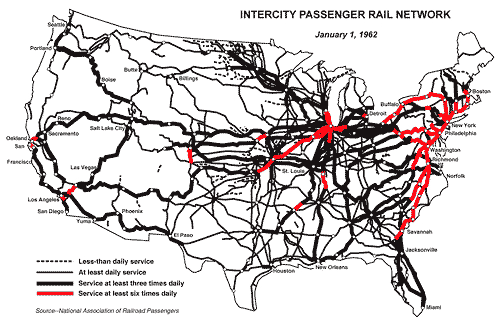
Beeching's plan, duly executed, was to close down a huge portion of the network, to immediate detrimental effect on people all over the UK. Two small, entirely typical examples from one place: in the rural market town of Kirkbymoorside, North Yorkshire, where we used to live, it had been possible, pre-Beeching, for anyone with an allotment, market garden or plant nursery, to put a crate of tomatoes onto an evening train and have them sold in Central London's Covent Garden market next morning. It had been possible, too, for a young woman to catch the train to the city for a Saturday night dance, and come back by train at the end of it. After Beeching, no such ready country-wide distribution except for those who happened to live on main lines, and a far greater social isolation. And, naturally, Beeching failed to make the railways pay. A barmy idea that was massively destructive.
In the US, the picture was different, but the same half century has seen a parallel reduction in services. Here's the map:

Published on April 02, 2013 01:15

